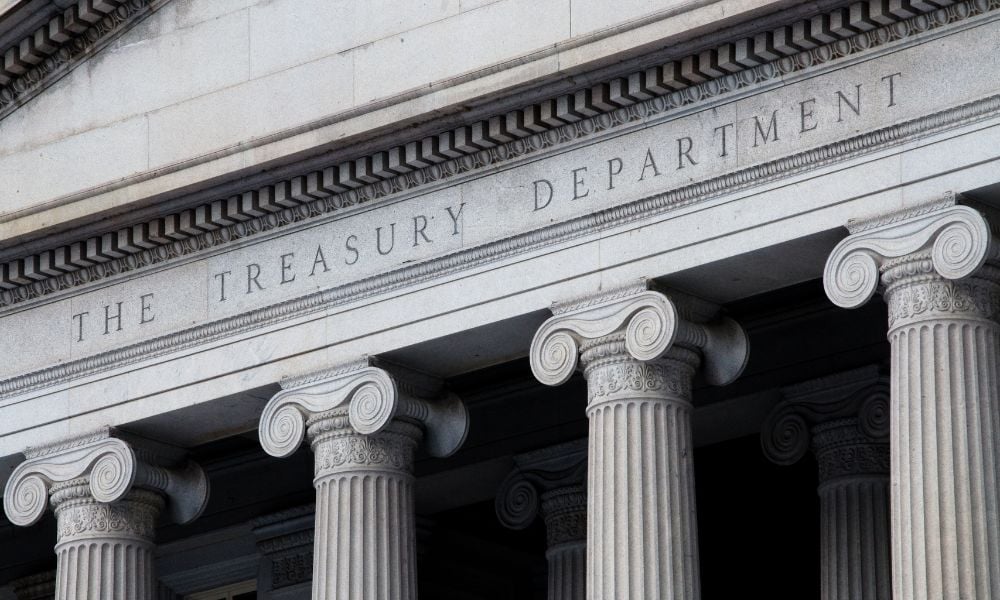

by Caitlin Reilly and Ari Natter
A Treasury Department decision due next week threatens to undermine the financial viability of hundreds of planned clean energy projects, adding to an escalating Trump administration campaign against wind and solar power.
President Donald Trump last month ordered the department to tighten long-standing guidance used to determine whether projects can qualify for clean-energy tax credits.
Until now, projects were eligible if developers spent at least 5% of the planned cost by a certain deadline. The president is pushing Treasury officials to significantly raise that amount or require developers to show more construction progress, which would make it more difficult, or even impossible, for many projects to qualify for the tax breaks that are often essential to their profitability.
Developers’ appetite to stick with the renewable energy projects or even secure financing for them will hinge on how far the Treasury Department goes in toughening eligibility standards.
More than 2,500 announced wind and solar projects — with a combined generating capacity equivalent to roughly 383 nuclear reactors — that have yet to begin construction could be affected by the Treasury Department’s decision, said Atin Jain, an energy analyst with BloombergNEF.
In just the past few weeks, the Trump administration has targeted wind and solar power through a rapid-fire series of permitting reviews. It imposed standards that would essentially prevent new developments on federal land. It rescinded Biden-era decisions earmarking coastal waters for future wind turbines. And it revoked federal approval for a massive planned wind farm in Idaho.
Despite rising demand and prices for electricity, the impending tax guidance could deal the final blow to many wind and solar projects, said Rhone Resch, the chief executive officer of Advanced Energy Advisors, a risk management consulting firm for renewable energy development.
“Projects will get canceled,” Resch said. “A lot of projects just aren’t going to be able to adapt to these new deadlines.”
Other developments, Resch added, will survive, but will take a hit to their profits.
More stringent standards for the tax credit also will drive up electric utility rates for consumers faster since renewables, particularly wind and solar, are the only energy sources that can be scaled up quickly to meet rising demand, said Brian Murphy, Ernst & Young LLP’s Americas Power, Utilities and Renewables Tax Leader.
Trump’s executive order last month signaling stricter limits for the tax credits set off a furious behind-the-scenes struggle within the Republican party, pitting senators sympathetic to wind and solar power against ultra-conservatives in the House hostile to renewable energy tax breaks.
Several Senate Republicans negotiated a longer phase-out period for wind and solar credits in exchange for supporting Trump’s signature tax law. But the president also struck a deal with members of the hardline conservative House Freedom Caucus to use his executive authority to curtail the tax credits in order to win their support for the same bill.
Under the provision negotiated by Senate Republicans, wind and solar projects that qualify as under construction by July 4, 2026, would have four years to complete work and collect the credit. Otherwise, they would have to be ready for use by the end of 2027 to be eligible.
Long-standing Treasury guidance set a safe harbor deeming projects under construction if developers met the 5% spending threshold by the deadline.
That has been cast in doubt by Trump’s executive order, issued last month just days after the tax law passed. Trump directed the Treasury Department to ensure projects cannot qualify for the credits unless “a substantial portion” of the facility is completed by the deadline next year. The president also urged the department to prevent “artificial acceleration” of wind and solar projects to qualify for the tax credits.
Developers thought “they had at least gotten to a point where now we know the new rules” when the tax bill passed, Murphy said. Then Trump’s executive order kicked off “a new round of uncertainty.”
Mike Carr, a partner at the government affairs firm Boundary Stone Partners who represents domestic solar manufacturers, said the impending Treasury Department guidance is now “the main game in town” for the sector.
Treasury Department spokespeople didn’t respond to requests for comment.
Republican Senator Chuck Grassley of Iowa, whose home state generates more than half its electricity from wind and whose support for the tax credit stretches back to a provision he helped insert into a 1992 energy law, has threatened to hold up confirmation of three Treasury Department nominees until he’s certain the department’s guidance adheres to “the law and congressional intent.” Senator John Curtis, a Utah Republican, has joined him in the threat.
The two senators were still negotiating with the Trump administration as of Tuesday, according to a person familiar with the matter.
© 2025 Bloomberg L.P.

LPL's head of HNW planning says too many advisors are making a common mistake.

Market risk index shows hidden perils in seeking safety, and potential benefits from non-traditional investment vehicles.

Friends and family members are "the easiest type of victim to profile and steal from,” said one attorney.

The commissioner also known as "Crypto Mom" says the agency is willing to work on different models with stakeholders, though disclosures will remain key.

Cetera's policy advocacy leader explains how gig worker protection proposal might hurt independent financial advisors, and why it's "a complete outlier" in the current legal landscape.
Stan Gregor, Chairman & CEO of Summit Financial Holdings, explores how RIAs can meet growing demand for family office-style services among mass affluent clients through tax-first planning, technology, and collaboration—positioning firms for long-term success
Chris Vizzi, Co-Founder & Partner of South Coast Investment Advisors, LLC, shares how 2025 estate tax changes—$13.99M per person—offer more than tax savings. Learn how to pass on purpose, values, and vision to unite generations and give wealth lasting meaning
